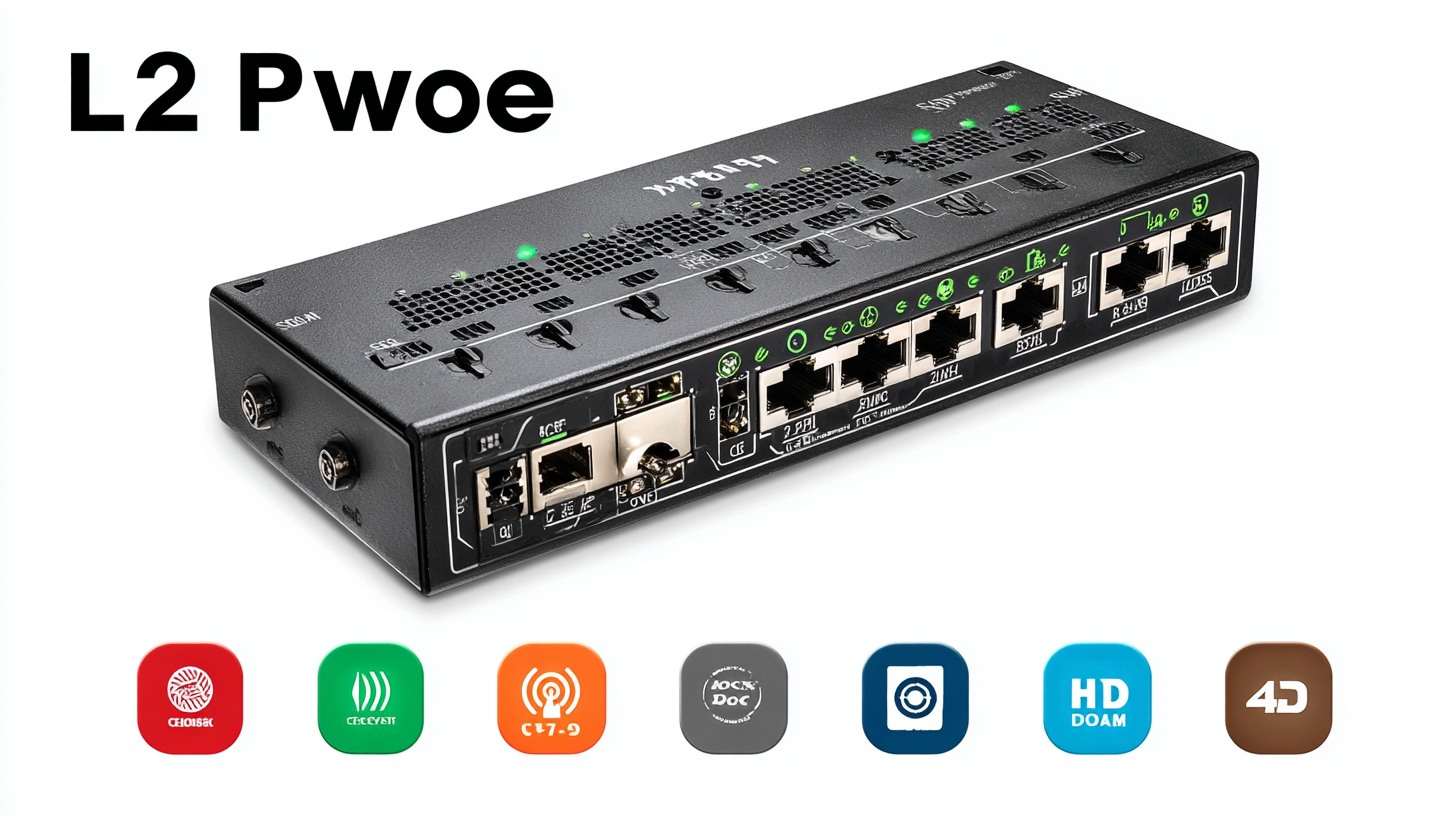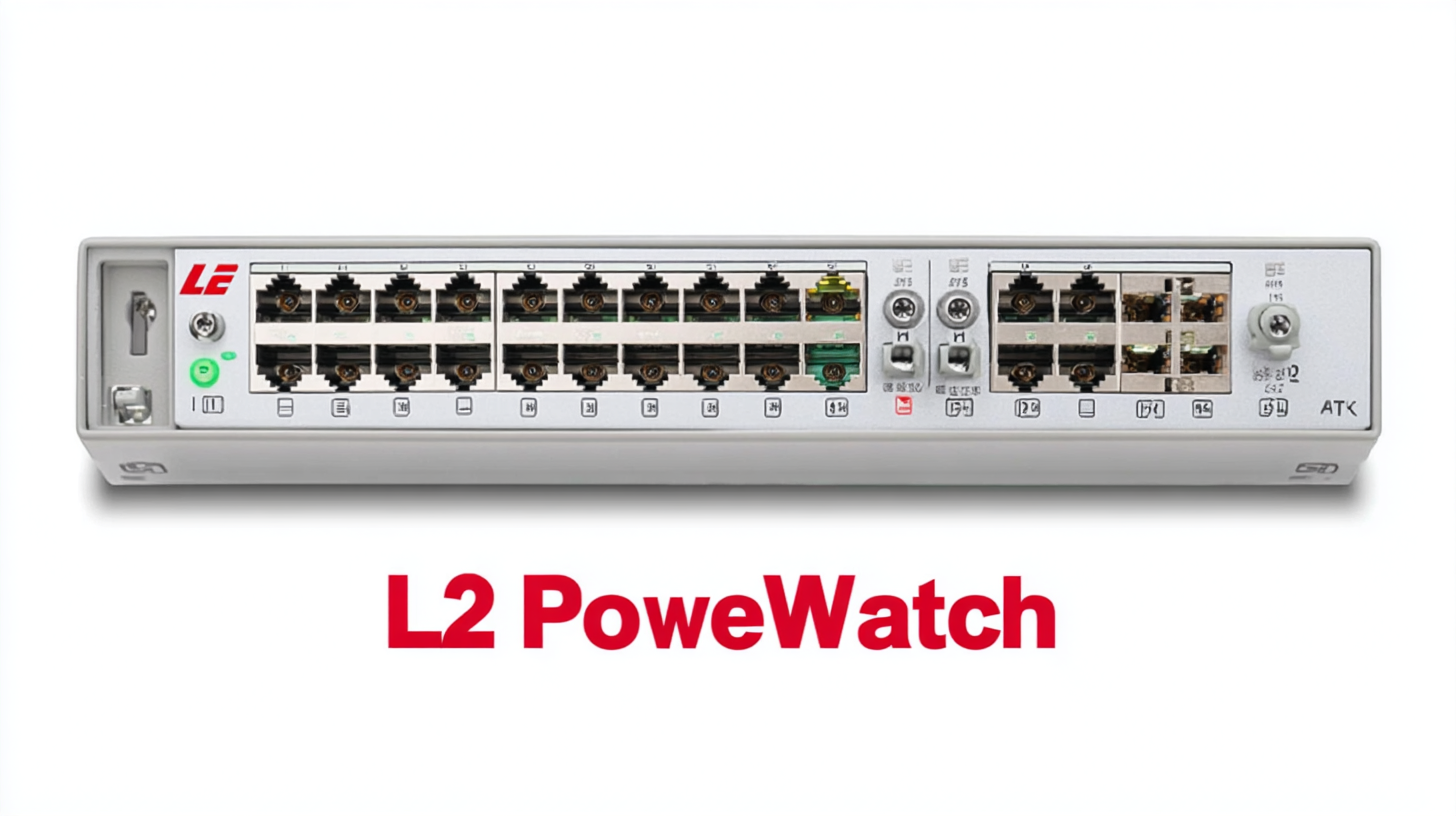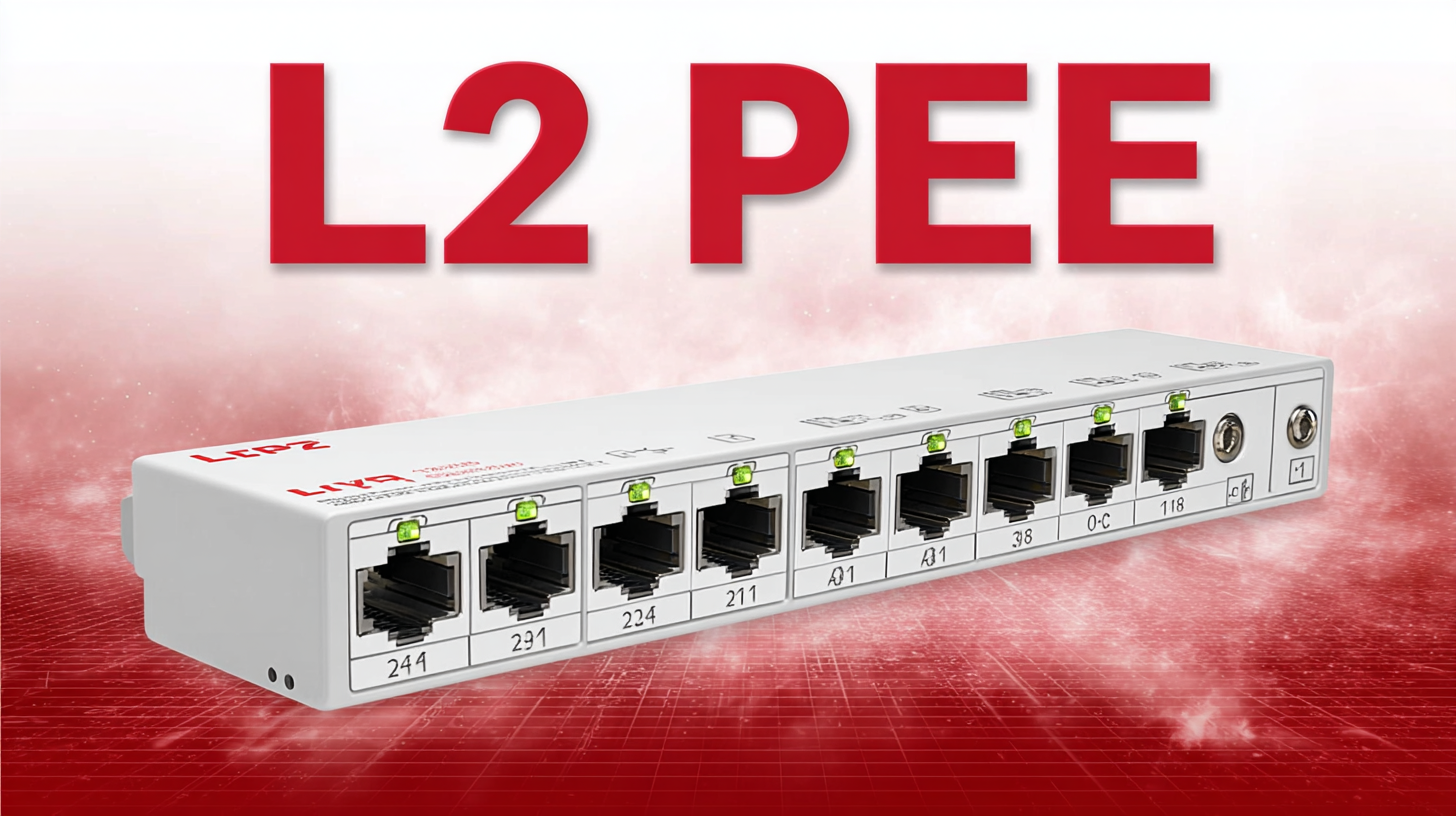
- [email protected]
- Mon - Sat at 7:00AM to 9:00PM
Leave Your Message

As the demand for more efficient networking solutions continues to rise, the role of L2 Managed PoE Switches has become increasingly pivotal in various industries. According to recent reports from industry analysts, the global market for Power over Ethernet (PoE) solutions is projected to reach $25 billion by 2025, driven by the expanding deployment of IoT devices and smart technology.

L2 Managed PoE Switches not only facilitate power delivery alongside data connectivity but also offer advanced management features that enable better network control and optimization. This comprehensive guide aims to navigate the overwhelming options available in the market, providing you with the essential insights needed to compare the best L2 Managed PoE Switches in 2025, ensuring that your network infrastructure is both robust and future-ready.
When it comes to optimizing your network, understanding Layer 2 Managed PoE switches is crucial. These switches are designed to facilitate efficient communication within your local area network, enabling devices like IP cameras, VoIP phones, and wireless access points to receive both data and power through a single cable.
 Key features to look for include port density, PoE power budget, and management capabilities, which can significantly affect the scalability and performance of your network.
Key features to look for include port density, PoE power budget, and management capabilities, which can significantly affect the scalability and performance of your network.
Tips: When selecting a managed PoE switch, consider your future growth. A model with higher port density can save costs down the line as you expand your network. Additionally, the ability to configure VLANs can enhance network security and performance.
Recent industry reports indicate that organizations are increasingly opting for switches that support higher speeds such as 10 Gigabit. These can provide the necessary bandwidth to keep up with the growing demand for data. Features like cloud management options are also becoming standard, allowing for easier monitoring and control of network devices across various locations.
Tips: Always assess the PoE budget of the switch to ensure it can meet your device power needs. Also, look for options that offer robust management tools, as these can lead to better network performance and reduced downtime.
When evaluating the power delivery needs for devices in a network, understanding the PoE (Power over Ethernet) budget is essential. The PoE budget refers to the total amount of power that a PoE switch can provide to connected devices, and calculating this budget helps in determining whether your switch can adequately support all necessary devices. Each PoE device, such as IP cameras, VoIP phones, and wireless access points, has a specific power requirement that must be considered. Therefore, the first step in evaluating your PoE budget is to list all connected devices and their individual power consumption.
Moreover, it's crucial to understand the different PoE standards—IEEE 802.3af, 802.3at (PoE+), and 802.3bt (PoE++), which dictate the maximum power available per port. The 802.3af standard supplies up to 15.4 watts per port, while PoE+ can deliver up to 30 watts. For even higher demands, PoE++ can supply up to 60 or even 100 watts per port, accommodating devices that require more power. By knowing the power specifications of your devices and the capabilities of your PoE switch, you can ensure a reliable and efficient network setup that meets your operational needs.
When evaluating L2 managed PoE switches, performance metrics and reliability are crucial factors that can significantly impact network efficiency. In this comparative analysis, we delve into leading brands, examining their throughput capabilities, Power over Ethernet (PoE) budgets, and support for advanced features like VLAN and QoS. With varying designs tailored for different environments, selecting the right switch can enhance your network's performance and scalability.
Tip 1: Always consider the PoE budget before choosing a switch. Understanding how much power is needed for your devices—cameras, phones, and access points—will ensure that your switch can handle the load without compromising performance or reliability.
Furthermore, reliability is often defined by a switch's uptime and the manufacturer’s reputation for durability. Look for switches that come with robust warranties and reviews highlighting their long-term performance. This will help you avoid costly downtimes that can disrupt your operations.
Tip 2: Check for firmware update policies and support from manufacturers. Consistent updates can mitigate security vulnerabilities and enhance functionalities, ensuring your network remains secure and up-to-date.
When selecting the right Layer 2 (L2) managed Power over Ethernet (PoE) switch for your network, scalability is a vital consideration. As businesses grow, their networking needs evolve, making it critical to choose a switch that can accommodate increasing data traffic and power demands. A scalable L2 managed PoE switch provides the flexibility to expand your network seamlessly, allowing for the addition of more devices without compromising performance.

One essential feature to consider is the number of PoE ports available on the switch. As your organization adds more devices, such as IP cameras, VoIP phones, and wireless access points, having sufficient PoE ports will streamline operations and eliminate the need for additional equipment. Furthermore, look for switches that support higher power budgets to ensure that all connected devices receive adequate power. Managed switches with advanced quality of service (QoS) settings will also help prioritize bandwidth for critical applications, thereby enhancing overall network performance and reliability. Prioritizing these elements will ensure your network remains robust and capable of meeting future demands.
When considering the acquisition of L2 managed Power over Ethernet (PoE) switches, it's essential to conduct a thorough cost-benefit analysis to ensure that you're investing in quality products that will lead to long-term savings. While the initial outlay for high-grade PoE switches may seem steep, this investment can yield substantial returns over time. Quality switches are typically more energy-efficient, reducing not only energy costs but also the frequency of replacements and repairs, which ultimately streamlines operational budgets.
Moreover, reliable PoE switches enhance the performance of your network, supporting a range of devices like IP cameras, wireless access points, and VoIP phones. By providing stable power and data connectivity, they minimize downtime and maintenance costs. Additionally, many managed switches come with advanced features such as traffic prioritization and enhanced security, adding further value by ensuring that critical applications run smoothly and safely. In assessing the total cost of ownership, it's clear that investing in high-quality, managed PoE switches is a savvy decision for businesses aiming for long-term operational efficiency and reduced expenditures.